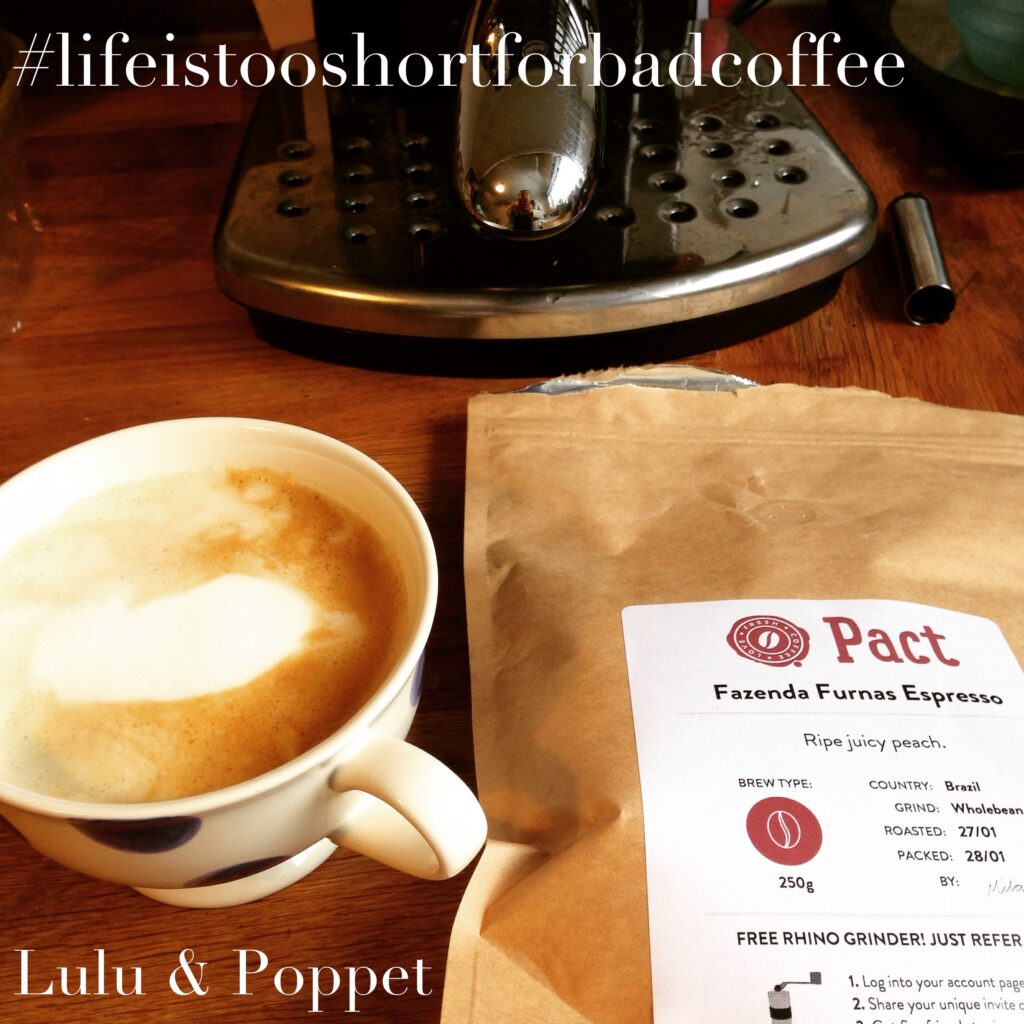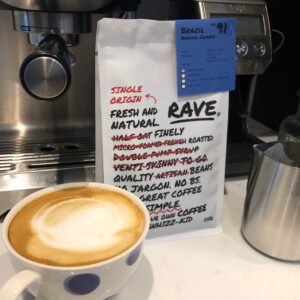My love affair with coffee: Part 1 – the tools of the trade

Coffee. It’s a serious business, and a serious daily ritual the world over. According to Business Insider after crude oil coffee is THE most sought after commodity, and worldwide we drink over 500 million cups every year. That’s a huge amount of caffeine hitting our bloodstreams day after day.
For me coffee is a daily ritual I hate to miss. But since I moved back to the UK I’ve felt stranded in a coffee wilderness with little option but to get my caffeine hit from the cafe chains that dominate the market in this country.
Life is too short for bad coffee. So I’m going to share with you how I’ve ditched the sub-standard coffee served in most UK cafes – I’m talking to you Starbucks, Cafe Nero and Costa – to make my own lattes, flat whites and cappuccinos at home.
Today I’m going to tell you about the tools of the trade – the equipment I use to deliver my brew – and next week I’ll share my ‘Seven Steps to coffee heaven’, the the knowledge I’ve gleaned from various coffee experts about how to make a great cup of the black stuff – from bean to cup.
First things first – you gotta have a good coffee maker. I’ve had a cafetiere for years, and my brother swears by his Bialetti hob-top pot, but for me it’s all about the espresso machine.
It may not be tall, but it is dark and handsome, and this Valentine’s Day I only had eyes for my new prize posse ssion – my Delonghi Scultura coffee machine.
ssion – my Delonghi Scultura coffee machine.
Oh what a fabulous addition this sleek and shiny piece of equipment is to my life. I cannot describe the amount of pleasure and satisfaction I get from making freshly ground, freshly brewed latte every morning. I’ll admit, as a wannabe coffee snob, part of this pleasure derives from being able to ditch Costa et al, and quit parting with over £2 per sub-standard cup.
In Australia, where I lived for five years, they do not take kindly to outsiders messing with their coffee. Independent coffee shops abound, the chains don’t get a look in. Just after I moved to Sydney in 2008 Starbucks announced the closure of 60 stores across Australia because the independent cafe culture is so strong – and the coffee so good – that the cafe giant, and slayer of independent cafes elsewhere, couldn’t gain any ground. Their shops were empty. Australian’s love their coffee too much to stoop to drinking Starbuck’s bitter, weak offering.
You fall over great cafes around every corner in Oz, and the food is just as good as the coffee. Where I lived in Sydney there were THREE cafes pulling kick-ass flat whites and frothing amazing cappuccinos on one small parade of local shops. I would go as far to say that it is as hard to get bad coffee in Sydney as it is to get good coffee over here.
“At it’s best coffee is far more than a caffeine hit to get you started in the morning – it’s rich, smooth and seductive, it wraps it’s arms around you and welcomes you to the day.”
Because let’s face it, most of the coffee here in the UK is dreadful. Undrinkable at worst (note to readers: don’t be offended if you ever suggest meeting at Starbucks and I politely decline), watery milk that once had a coffee bean wafted near it at best. The beans aren’t freshly roasted, it’s not ground to order, and often the espresso shot is just dumped into a cup of frothy milk – rather than having the milk lovingly poured into it. The shocking thing to me now is that most people don’t seem to realise how bad it is – they just accept that this is how coffee is. I did too, then I moved to Australia and realised what I’d been missing.
At it’s best coffee is far more than a caffeine hit to get you started in the morning – it’s rich, smooth and seductive, it wraps it’s arms around you and welcomes you to the day. When I decided to move back here I knew that I would struggle with the terrible coffee, so I gathered what knowledge I could from the Aussies, took a barista course, and made it my mission to find some decent local coffee shops. But it hasn’t been easy. Not living in London makes it harder. The confession that sometimes my best option was to buy a latte from a Costa Coffee machine in a Shell garage on my way to work was met with looks of horror from my friends in Sydney.
So now we have our own house I finally have my very own espresso machine. My lovely mum bought it for me for my birthday (thank you, thank you Mother dearest). It has pride of place on the kitchen counter in our new home. The Delonghi Scultura is Which magazine‘s number one coffee machine and a top bit of kit. It’s not the true money-is-no-object coffee snob’s machine of choice, but it’s the best my budget could afford and enables me to make coffee that stands head and shoulders above what you can buy in most cafes around here, so I’m happy.
My brother bought me a little manual Hario grinder – which my research told me was the best way to grind without spending a fortune on a top of the range automatic grinder. 
My brother also introduced me to Pact Coffee. Oh Pact, how I love thee. Every fortnight or so a packet of fresher than freshly roasted coffee beans land on my door mat. I received my first pack on 30th January and the packet said it had been roasted on the 27th – you can’t get better than that. Check out the packet in the main image at the top of this post.
As I’ll expand on in my ‘Seven steps to coffee heaven’ post next week, before I left Sydney I did a barista course with Toby’s Estate and learnt that a month to six weeks after coffee is roasted it is stale. Most coffee we drink on the high street or buy in the supermarket sits on a shelf for up to two years. No thank you. I want the fresh stuff. It’s rich and smooth, it smells divine and it’s well worth seeking out.
These bits of kit have helped me move my relationship with coffee onto the next level. I’m in it for the long haul. Coffee may seem trivial to some, but I’ll wager that’s because they’re not drinking the good stuff. Thanks to five years in Oz I’m not accepting less than I deserve when it comes to my caffeine fix, and it’s a romance I intend to continue nurturing.
If you take your coffee seriously too, and want to know how to improve the brew in your cup check back next week for my seven steps to coffee heaven.

One Comment
Comments are closed.